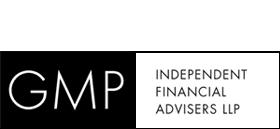two different types of inflation
May 16th, 2011
John Greenwood, group chief economist at Invesco Perpetual, offers his global economic outlook for the second quarter of 2011 and weighs up the implications of the strong economic recovery in the emerging markets. Between September 2010 and the Japanese earthquake on 11 March 2011, equity and commodity markets have enjoyed an extended rally, driven principally by the prospect of sustainable economic recovery in the leading economies, particularly in the US. Two major factors in the upturn in US markets since September were the announcement in August followed by the implementation from November of the second round of quantitative easing (QE2), together with the fiscal stimulus agreed between the Obama administration and the Congress in December. QE2 will terminate in June and is not expected to be renewed, while the fiscal stimulus will fade gradually during the second half of 2011. Markets will therefore face significant challenges in the period ahead. In addition, inflation concerns have been rising, not only in the US and most developed economies, but also in the emerging economies of Asia and Latin America as commodity prices – especially energy and food prices – have continued to rise. The immediate trigger for commodity price rises was a series of environmental problems such as floods and droughts affecting agricultural commodities, exacerbated by political tensions in the Middle East and North Africa affecting energy prices, together with continuing anxieties about the stability of the financial systems in the developed economies affecting precious metal prices. However, there has been one main, underlying driver: the strong economic recovery in emerging economies. The key question for markets over the next few months is the sustainability of economic recovery and the extent of the inflationary threat. In my view the answer is different for the developed and emerging economies. In the developed economies money and credit growth have been very weak over the past year and more, and fiscal retrenchment is widespread, meaning there will continue to be excess capacity available to meet any upswing in demand.
Shift in relative prices
For these economies, therefore, the upturn in inflation does not represent a threat of sustained inflation, but is best understood as a shift in relative prices or in the terms of trade, with the rise in imported commodity prices leading to a temporary rise in headline prices and a lesser rise in core price indices (which generally exclude food and energy). The rise in such prices will erode consumer incomes and spending power in the commodity-importing economies in the short term, and encourage a shift of resources away from consumption and housing towards investment and production in the deficit economies in the longer term. This is part of the needed macroeconomic rebalancing of economies in the aftermath of the global economic crisis of 2008/09. In the emerging economies where economic recovery has been strong, notably in Asia and Latin America, money and credit growth has been much faster, thanks to healthy balance sheets in the banking, corporate and household sectors. The problem is that easier credit, exacerbated by investment and carry-trade inflows from the developed economies, has already generated sharp property price increases across much of Asia and, as domestic spending continues to strengthen, it is now threatening a more deeply embedded inflation at the consumer price level. Unless monetary conditions are tightened through higher interest rates, increased reserve requirements or currency appreciation, there is a significant risk central banks in these emerging economies may be compelled to curtail money and credit growth more forcefully, putting an end to the economic upswing. Emerging markets therefore face a year of further policy-tightening measures that are likely to undermine equity and bond market performance in these regions. To summarise, developed economies mostly face a shift in the composition of inflation with higher commodity and goods prices but relatively lower service prices and an erosion of real incomes against a background of weak money and credit growth, whereas emerging economies are experiencing a much more rapid rate of growth of money and credit that has already triggered property price increases, and could threaten a more prolonged bout of generalised inflation if not brought under control.
Crisis spreads
Meanwhile the sovereign debt crisis in the euro economies has spread to Portugal. This is merely the latest example of sovereign balance sheet vulnerability in the euro-area that has become common to many developed economies. The recurrent eurozone crisis has resulted from a decade of overexpansion – either of the banking systems or of government spending commitments to their populations. Since governments nowadays feel obliged to step in and prevent massive failures in the banking system – as they did in Iceland and Ireland – the liabilities of banks have ended up as obligations of governments. Consequently, no matter whether the source of the problem was private or public debt, government balance sheets have become dangerously extended. In my view the debt crisis in the eurozone will continue for several more quarters, and more economies will be tested since market participants are highly sceptical of the interim solutions offered so far, either on the fiscal side or on the monetary and banking side. In financial markets the divergence between the easy monetary stance in the developed economies and the tightening monetary stance in emerging economies has already caused a wide divergence of performance between equities in the two arenas. Since these two contrasting policy stances are likely to remain in force during the remainder of 2011, the performance divergence may be expected to continue. However, the longer-term prospects for both areas are promising, provided emerging markets policymakers are successful in bringing inflation under control. The current hiatus in emerging markets performance should therefore be regarded as merely a mid-course correction with the possibility of several years of business cycle expansion still ahead for both developed and emerging markets. In conclusion, 2011 is likely to be a year of further economic recovery in the developed — mainly western — economies, constrained by household balance-sheet repair in the household and financial sectors of over-indebted economies such as the US, UK, Spain and Ireland, and a growing burden of public sector debt almost everywhere.
Excess capacity
In most developed economies levels of economic activity have not yet returned to pre-crisis norms, and high levels of excess capacity and unemployment persist. Nevertheless, even with only moderate rates of real GDP growth the rise in commodity import prices is triggering an upturn in headline and — in some cases – core inflation. However, despite QE and very low interest rates, this episode of commodity-based inflation does not mark the start of a sustained inflationary upswing, as money and credit growth rates are negligible across the developed world. Consequently most developed economy central banks will not respond with rate hikes. By contrast, in the emerging world strong recoveries and rapid rates of growth of money and credit are fuelling a more fundamentally-based inflation. These recoveries should continue at a healthy pace in 2011, but policy-makers are already being confronted with rising inflation, requiring central banks to tighten further. In the past, emerging economies tended to judge their interest rates in relation to levels in the developed world, but with the developed world struggling with the aftermath of banking crises and a balance sheet recession, those guideposts are no longer appropriate. Most emerging economies will therefore spend the balance of this year attempting to normalise rates, but will often find they are behind the curve. For all your investment requirments please contact Mark or Clare at GMP Independent Financial Advisers LLP on 0207 2886400

